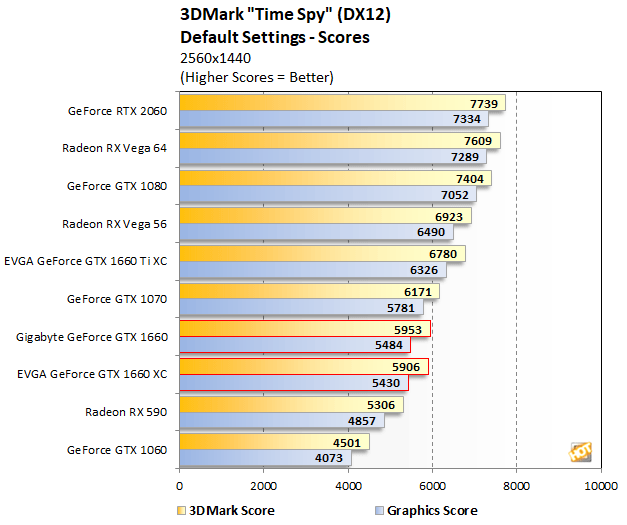GeForce GTX 1660 - 3DMark Time Spy And Fire Strike
3DMark Time Spy is a synthetic DirectX benchmark test from Futuremark. It features a DirectX 12 engine built from the ground up to support bleeding-edge features like asynchronous compute, explicit multi-adapter, and multithreading. Time Spy is designed to test the DirectX 12 performance of the latest graphics cards using a variety of techniques and varied visual sequences. This benchmark was developed with input from AMD, Intel, Microsoft, NVIDIA, and the other members of the Futuremark Benchmark Development Program, to showcase the performance and visual potential of graphics cards and other system resources driven by close-to-the-metal, low-overhead APIs.
|

3DMark Time Spy


|
|
|
In the less demanding DX11-based Fire Strike benchmark, the EVGA and Gigabyte GeForce GTX 1660 cards falter a bit and end up trailing the rest of the pack. We should note that we used a 6GB GTX 1060 for reference data here -- with a lower-cost 3GB model (which also has fewer texture units), the new GTX 1660s would likely have edged this one out. We're also told there's a bug with this benchmark with the 1660s that may get addressed at some point, so its possible performance will get better with a future driver update.









